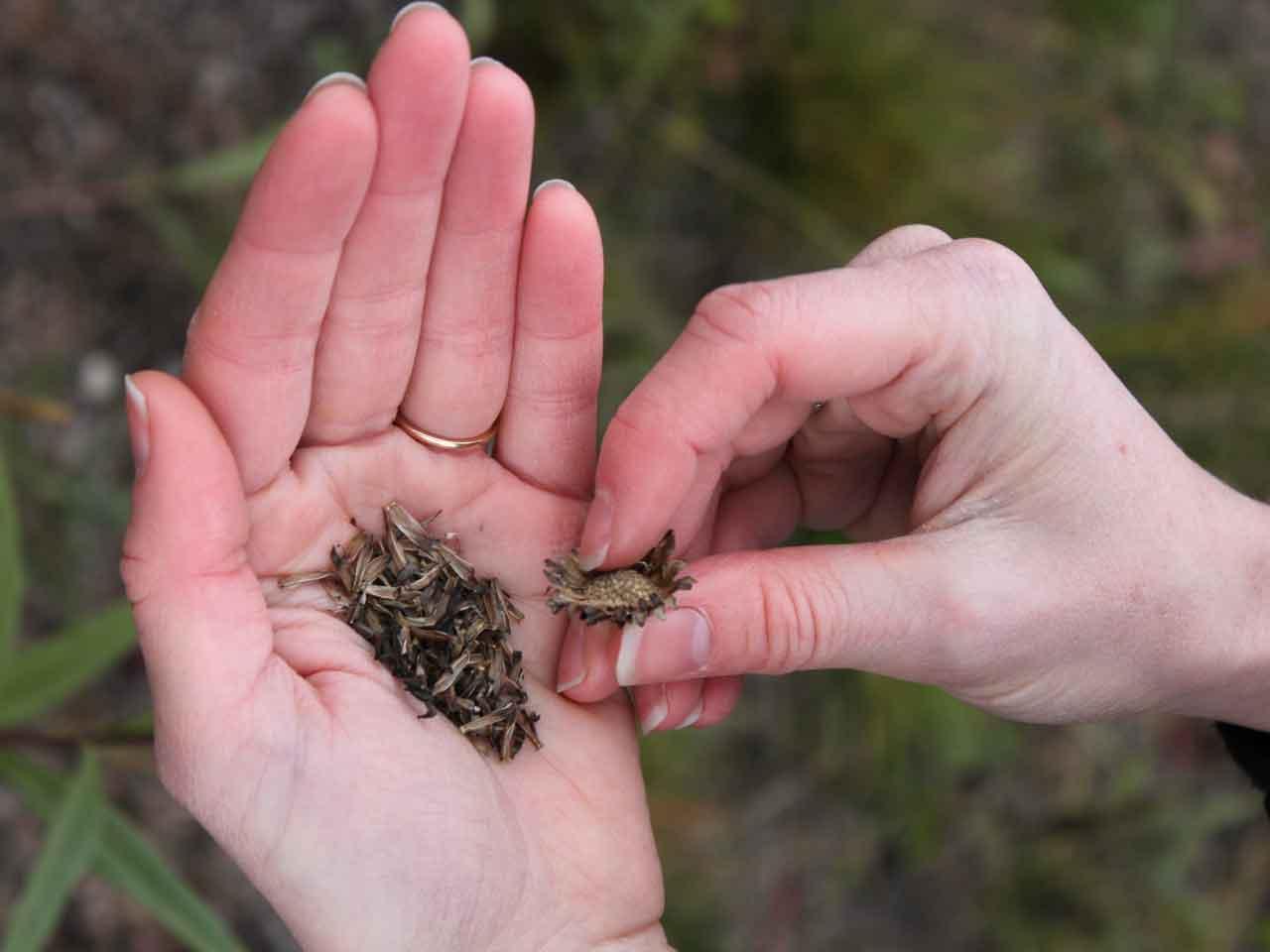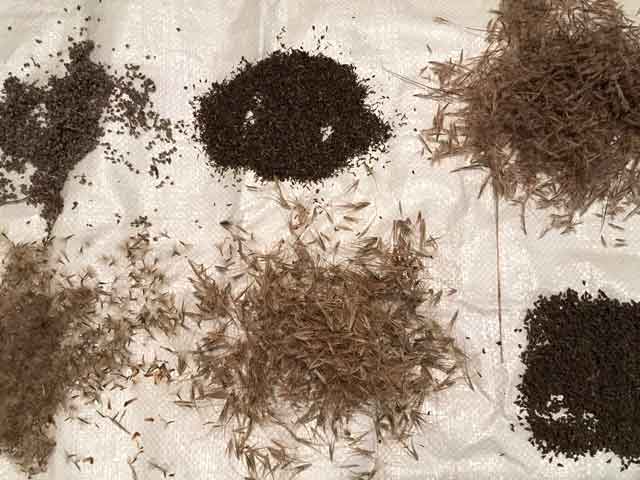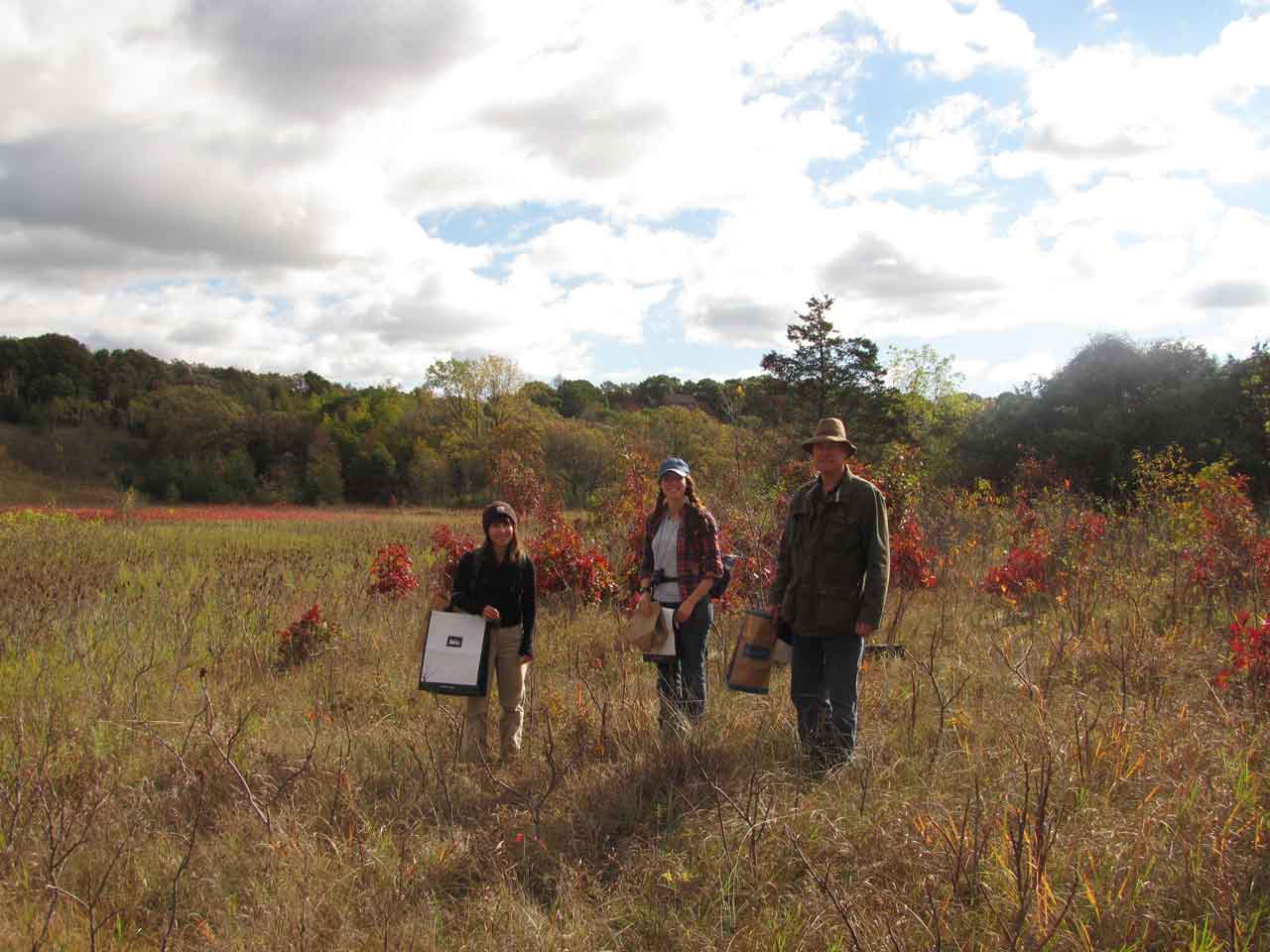Why do volunteers hand-collect seed for FMR?

Every fall, FMR hosts volunteer events to collect native prairie seed by hand. If you've been to one, you know one person could gather seeds for two hours and end up with only a few teaspoons of seed. So is this the most effective way to obtain the seed we need? Not necessarily, but for places as special as the Sand Coulee or Grey Cloud Dunes Scientific and Natural Areas, it's essential.
Most prairie seeds sold commercially are not hand-collected. Individual species of plants are grown separately in stands. A machine harvests seed in large batches, which are then machine-processed to remove the chaff.
This method is often the most efficient, but there are certain situations, and plant species, that require a more specialized approach.
The closer the seed source, the better
FMR helps the Minnesota Department of Natural Resources (DNR) manage several Scientific and Natural Areas (SNAs) in the Twin Cities, including Hastings Sand Coulee and Grey Cloud Dunes in Cottage Grove, which both feature expansive native prairies.
These sites retain some of the best examples of intact native plant communities in Minnesota. And such special areas require special management.
At SNAs, ecologists aim to retain and replicate the historical plant communities that existed before European arrival. Any seed that's going to be introduced to the site is required to be from as close to the restoration site as possible. This ensures that any new plants are not only typical of that plant community but genetically similar.
That's important because plants adapt to their particular local climatic and ecological conditions. Seeds that come from farther away won't be as well-adapted to the SNA being restored. Seeds from local plants have a much better chance of successful establishment.

Living laboratories
There's another reason the local genotype of the seed is important; ecologists still have a lot to learn about historical plant communities in Minnesota.
Because some parts of the prairies at these SNAs are intact, they serve as a sort of living laboratory, allowing us to study all different aspects of these unique areas. But if we restore plants from other places to these sites, the resulting changed communities dilute our ability to understand how our historical prairies functioned.
Why by hand?
So if local seeds are important for successful restoration of these sites, why collect those seeds by hand? Why not just buy them or use a machine to harvest?
Though local seed suppliers do carry some of the species we collect, most often the seeds themselves are not local. And nearby seed suppliers may simply lack some of the less common species that we want to reestablish, like hairy grama grass or silky prairie clover.
We do sometimes get mechanically harvested seed from nearby prairie sites. But the species that can be obtained this way are generally very limited.
Seed harvesters can only gather seeds that come off easily using its brush. And mechanical seed harvesting is always done in the fall when most seeds are ripe.
By hand-collecting seeds, we can target species that mature before the fall, species that are hard to collect by machine and seeds that are from the right place.
So the seeds our volunteers harvest are almost worth their weight in gold for our restoration efforts!
Sand Coulee SNA success
Thanks to all the volunteers that have helped over the many years of our seed collection events. We have used the seed collected at Sand Coulee SNA since 2008 to help restore nearly 90 acres of prairie at that site. And in 2018 we will spread hand-collected seed at a 3-acre portion of the SNA, the final part of the site where prairie still needs to be reestablished.

Get involved
Interested in lending a hand? Check our events calendar to find upcoming volunteer opportunities. You can also sign up for Mississippi Messages, our biweekly e-newsletter, to get events, updates and more delivered to your inbox.
Visit the DNR website for more information on exploring Sand Coulee and other SNAs.